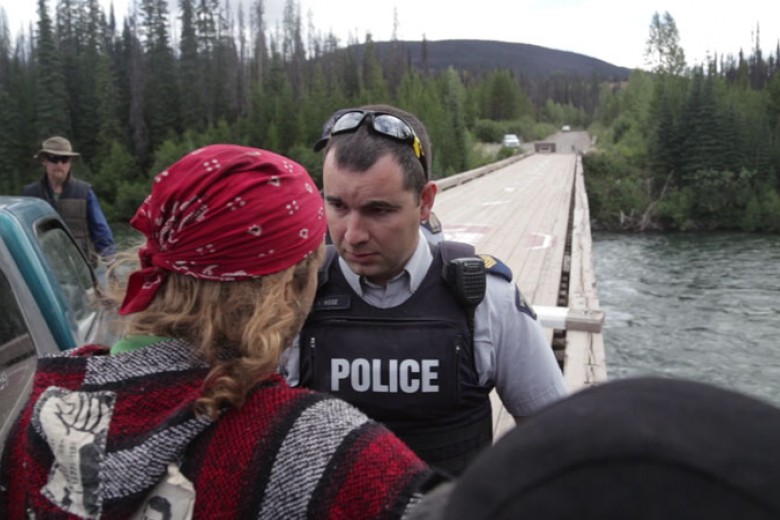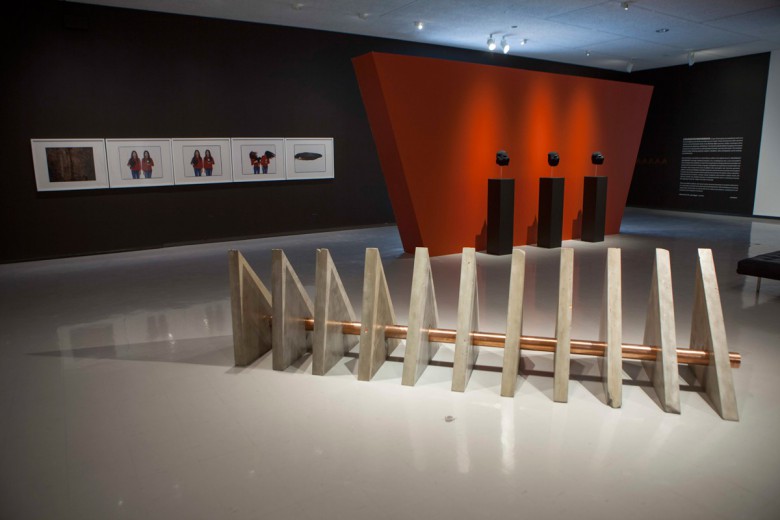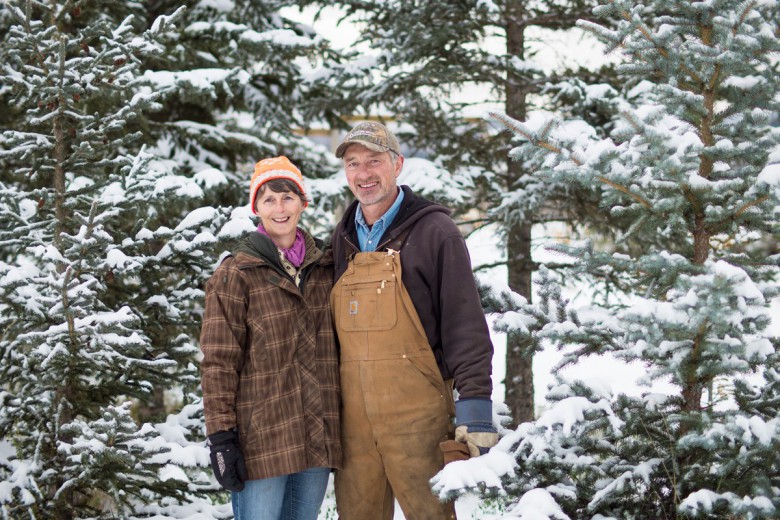
In December 2007, the Council of the Haida Nation and the Government of B.C. ratified a Strategic Land Use Agreement for Haida Gwaii, also known as the Queen Charlotte Islands, off the north coast of B.C., following four years of participatory planning in island communities. The agreement is a bold challenge to traditional economic policy, representing a major shift from an export-driven, resource-based economy to an ecologically grounded approach to a sustainable economy on Haida Gwaii.
Yet, for the Haida this paradigm shift is not novel, but rather a belated recognition of the values deeply rooted in their culture and their traditional relationship to the land, and encoded in Haida law.
It is a rare sunny day in August 2007 in Old Massett. Children play in front of Haida artist Christian White’s handcrafted longhouse facing the beach, which is a mosaic of kelp, stones, broken shells and, occasionally, old trading beads and glass Japanese buoys. White has lent out his space for a special public event: one of a series of open houses hosted by the Council of the Haida Nation (the elected leadership of the Haida) and the Government of British Columbia throughout the villages of Haida Gwaii. The purpose of these open houses is to solicit community input on the Strategic Land Use Agreement before it is finally ratified. The land-use plan is a legally binding accord between both governments that determines how the islands’ resources will be used from the present into the distant future.
Distracted by the woes of the global economy and disintegrating Kyoto Protocol, the media has almost completely overlooked this historic step towards community-based sustainability. Yet it is one of the most innovative examples of an ecologically sound economic plan. In the years to come, it will stand as an inspiring example of successful ecological governance.
The highlights of the land-use plan, ratified in December 2007 by the Council of the Haida Nation and the Government of B.C., are impressive: an increase in protected areas from 23 per cent to 50 per cent of the total land base, all to be co-managed by both governments; a drastic drop in the annual allowable cut (the minimum rate of logging set annually by the Chief Forester of B.C. on a regional basis) for Haida Gwaii from approximately 1.8 million cubic metres to 800,000 cubic metres, including 100,000 cubic metres to be locally managed by Haida and non-Haida communities in a community forest tenure; a 1000-year old-growth cedar management plan; and the implementation of what promises to be a more sustainable form of “ecosystem-based” resource management, which seeks to balance community, economic and environmental well-being.
Following the signing of the Land Use Agreement, Guujaaw, the charismatic, elected President of the Council of the Haida Nation, stated that “after 50 years of intensive forestry without holistic planning, this land-use agreement now starts to bring cultural, environmental, and economic interests into balance.”
It is precisely this balance that has eluded national, regional and municipal governments around the world as they seek to respond to increasing environmental degradation while continuing to focus on economic growth.
At the open house in Old Massett, detailed maps cover the walls of the longhouse. The maps depict various types of land use, from logging operations to endangered species habitat. Thick research documents are laid out on the tables alongside display boards that explain the various stages of participatory planning and the proposed outcomes. These are just some of the results of the hard work of both governments, and community planning tables. What is so significant about this particular land-use planning process is that the Council of the Haida Nation insisted they co-host the process with the Government of B.C. on a “government-to-government” basis. This is in stark contrast with past land-use planning in which the Province ignored First Nations’ interests, or merely consulted First Nations as “stakeholders” in a competitive environment with other, much more powerful stakeholders.
Since contact, successive generations of colonial administrators and developers, privileging Eurocentric notions of progress, have denied the relevance of Haida systems of resource management and created immense political and economic challenges for Haida governance. Following contact, Haida population fell by over 90 per cent within one hundred years as a result of smallpox and other introduced diseases. In an attempt to extinguish Haida culture, missionaries established a residential school and the state banned the potlatch. Colonization brought intensified commercial fishing and industrial forestry, depleting resources and denuding land that had been stewarded under Haida governance for thousands of years.
Haida history
Long before Captain George Dixon named the archipelago after his ship, the Queen Charlotte, the Haida had mapped their own intimate relationships to this place. According to their oral history, the Haida emerged as a people on the northernmost point of the islands, where Raven roused the first slumbering Haida from a clamshell.Then, Haida Gwaii was known by another name: Xhaaydla Gwaayaay, “the Islands on the Boundary between Worlds.” Along this boundary, the intertidal zone that connects the land, sea, and sky, the Haida people thrived, understanding themselves as but one element amongst a vast interconnected web of natural and supernatural beings.
Haida oral history describes a vast network of villages, fronted by exquisitely carved houses and mortuary poles, alive with song and dance, carving and basketry, stories and poetry. It was a society supported by hunting, fishing and gathering, where Haida knowledge of what plants and animals were useful to them was complemented by their understanding of careful stewardship.
The Haida continue to see themselves as part of nature, and as such their ecological vision has focused less on the preservation of wilderness outside of human involvement and more on re-establishing the symbiotic relationships between humans and the rest of the living world. Ensuring the integrity of the ecosystems of Haida Gwaii means ensuring the continued flourishing of Haida culture – and vice versa. The Council of the Haida Nation states that “we have always used the land and ocean in careful, cautious ways that provided for present and future generations and protected the ecosystems that sustain us. We focus on what to leave, not what to take.”
This vision is reflected in the main goal that the Council of the Haida Nation brought to the planning process: “[To] protect and restore the land and ocean ecosystems of Haida Gwaii – the basis for Haida culture.”
Yah’Guudang: Practical implications
The Land Use Agreement was the hard-earned result of four years of negotiations between the Council of the Haida Nation and the Government of B.C., with input from a participatory Community Planning Forum composed of 29 representatives from interest groups that ranged from forestry to tourism development. The guiding philosophy for the entire process was the Haida principle of yah’guudang, respect for all living beings. The Haida Land Use Vision states that “a land use plan must adequately address certain priorities, beginning with the well-being of the land. We need to clearly understand the changes that have occurred to ecological conditions and our culture, and then provide directions for restoring and maintaining balance.”
The damage Haida Gwaii has endured is extensive. The Gowgaia Institute estimates that in the past century 168,750 hectares of old-growth forest – the equivalent of 101,033,929 telephone poles – have been cut. Many of these trees have been the 1,000-year old cedar trees central to Haida culture. In an effort to safeguard remaining cedars, the Haida have completed a sample inventory to estimate available and future Culture Class Five cedar trees necessary for pole carving, as well as Class Four and Three trees that will become suitable in time. Furthermore, they have mapped areas containing culturally modified trees, and sought to evaluate the health and future sustainability of all traditional and medicinal plants.
Beyond these stewardship initiatives, the agreement also deals with tough issues such as forestry, historically the prime engine of the island economy. Logging has long been a divisive and explosive issue in the local politics of Haida Gwaii, where festering tensions between differing values and economic visions have sometimes erupted into conflict amongst the island’s communities. While the Council of the Haida Nation are committed to slowing down and changing the approach to forestry, they recognize that it will continue to be a part of the economy. “There always will be people working with forestry extraction, but we want to do it sustainably and for islanders, by islanders at a rate that the land could bear,” says Kevin Brown, Assistant Land Use Plan Coordinator with the Council of the Haida Nation.
Frank Collison, the chair of the Council of the Haida Nation’s Forestry Committee, agrees: “Keep the land strong, keep it decent, keep the water clean, and make sure that there is habitat for the fish and habitat for the birds. Do what we have done traditionally – which is take what we need.” Collison recognizes that although the Haida live differently today than they used to, their philosophy is the same: “Right now we all have electricity and iPods and CDs. We all need a little bit more but it doesn’t mean that we have to take twice as much… . We don’t have to give in to corporate greed… . You can do [it] on a small scale that’s workable and sustainable for all of us.”
The Haida recognize that many aspects of the plan will be difficult to implement and that many new problems will surface. But they believe that, by reorienting the economic development of the island to bring it back in line with their traditional ecological vision and rich culture, the future will reflect the sustainability of the Haida past. That the Government of B.C. and the non-Haida islanders are supportive of this vision and willing to collaborate to enable major transformations in the island economy and resource management systems is exciting and hopeful. As the ecosystem-based management objectives and other outcomes of the land-use plan continue to be implemented, the rest of the world should watch this unprecedented social and ecological experiment and follow on the heels of its successes.
Through the plan, Guujaaw believes the Haida are “creating a future where our own kids would know that they could go out and experience the land the way our ancestors had.” And in a world that is changing so rapidly, this is no small feat.






